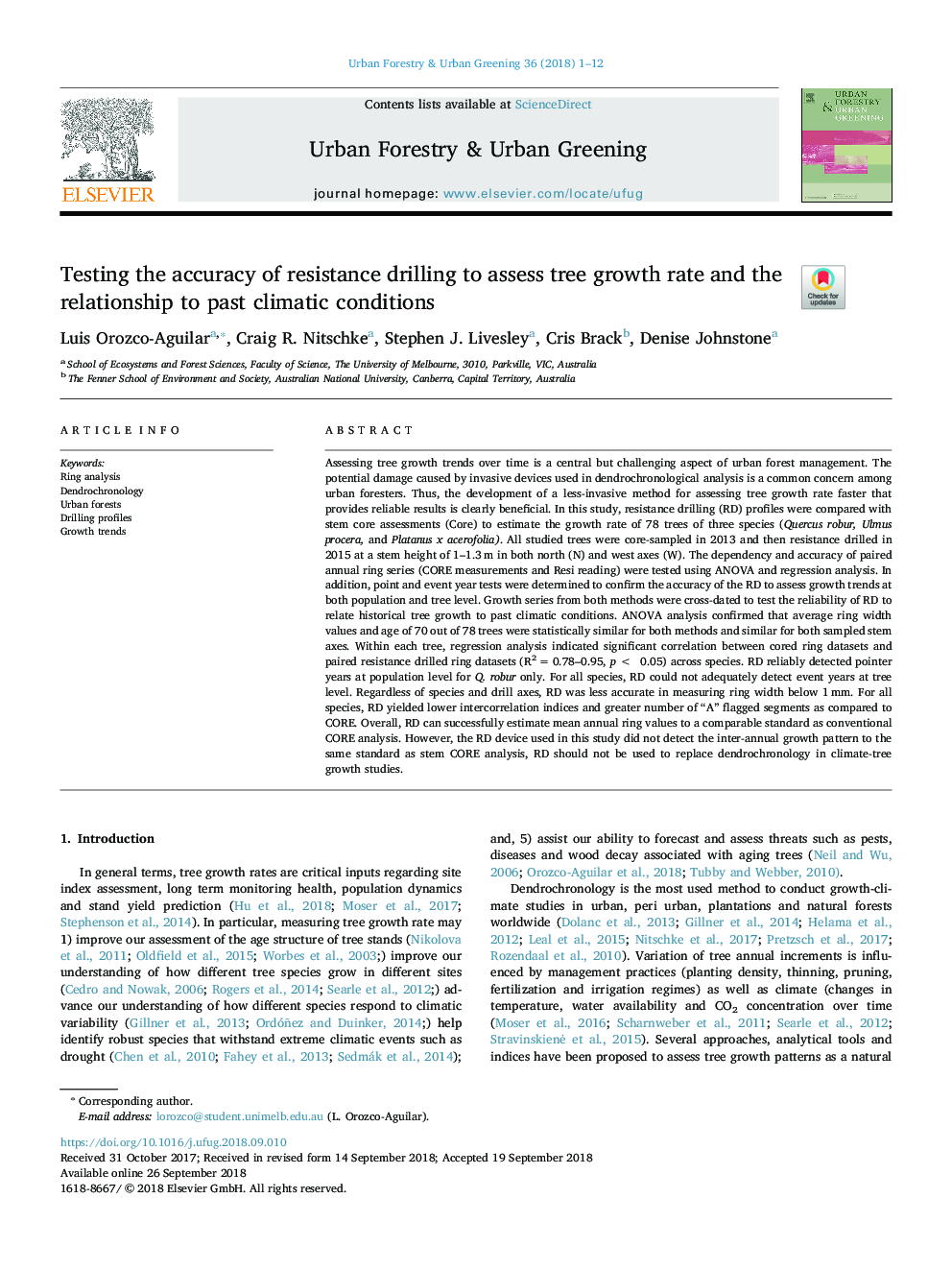| کد مقاله | کد نشریه | سال انتشار | مقاله انگلیسی | نسخه تمام متن |
|---|---|---|---|---|
| 11017561 | 1725700 | 2018 | 12 صفحه PDF | دانلود رایگان |
عنوان انگلیسی مقاله ISI
Testing the accuracy of resistance drilling to assess tree growth rate and the relationship to past climatic conditions
ترجمه فارسی عنوان
تست دقت حفاری مقاومت برای ارزیابی نرخ رشد درخت و رابطه آن با شرایط آب و هوایی گذشته
دانلود مقاله + سفارش ترجمه
دانلود مقاله ISI انگلیسی
رایگان برای ایرانیان
کلمات کلیدی
تجزیه و تحلیل حلقه، دندرونگنولوژی، جنگل های شهری، پروفیل حفاری، روند رشد،
موضوعات مرتبط
علوم زیستی و بیوفناوری
علوم کشاورزی و بیولوژیک
جنگلداری
چکیده انگلیسی
Assessing tree growth trends over time is a central but challenging aspect of urban forest management. The potential damage caused by invasive devices used in dendrochronological analysis is a common concern among urban foresters. Thus, the development of a less-invasive method for assessing tree growth rate faster that provides reliable results is clearly beneficial. In this study, resistance drilling (RD) profiles were compared with stem core assessments (Core) to estimate the growth rate of 78 trees of three species (Quercus robur, Ulmus procera, and Platanus x acerofolia). All studied trees were core-sampled in 2013 and then resistance drilled in 2015 at a stem height of 1-1.3âm in both north (N) and west axes (W). The dependency and accuracy of paired annual ring series (CORE measurements and Resi reading) were tested using ANOVA and regression analysis. In addition, point and event year tests were determined to confirm the accuracy of the RD to assess growth trends at both population and tree level. Growth series from both methods were cross-dated to test the reliability of RD to relate historical tree growth to past climatic conditions. ANOVA analysis confirmed that average ring width values and age of 70 out of 78 trees were statistically similar for both methods and similar for both sampled stem axes. Within each tree, regression analysis indicated significant correlation between cored ring datasets and paired resistance drilled ring datasets (R2â=â0.78-0.95, pâ<â 0.05) across species. RD reliably detected pointer years at population level for Q. robur only. For all species, RD could not adequately detect event years at tree level. Regardless of species and drill axes, RD was less accurate in measuring ring width below 1âmm. For all species, RD yielded lower intercorrelation indices and greater number of “A” flagged segments as compared to CORE. Overall, RD can successfully estimate mean annual ring values to a comparable standard as conventional CORE analysis. However, the RD device used in this study did not detect the inter-annual growth pattern to the same standard as stem CORE analysis, RD should not be used to replace dendrochronology in climate-tree growth studies.
ناشر
Database: Elsevier - ScienceDirect (ساینس دایرکت)
Journal: Urban Forestry & Urban Greening - Volume 36, December 2018, Pages 1-12
Journal: Urban Forestry & Urban Greening - Volume 36, December 2018, Pages 1-12
نویسندگان
Luis Orozco-Aguilar, Craig R. Nitschke, Stephen J. Livesley, Cris Brack, Denise Johnstone,
